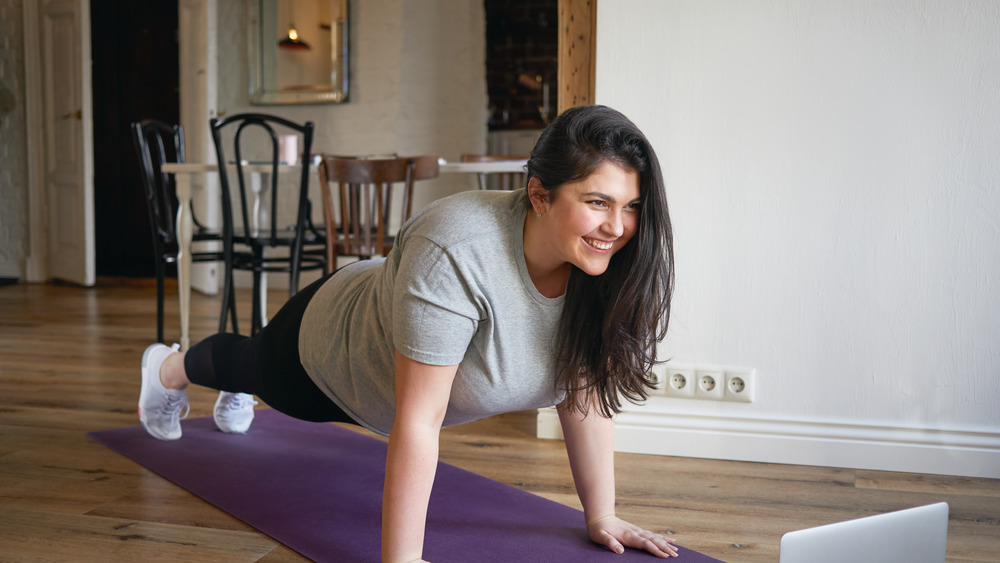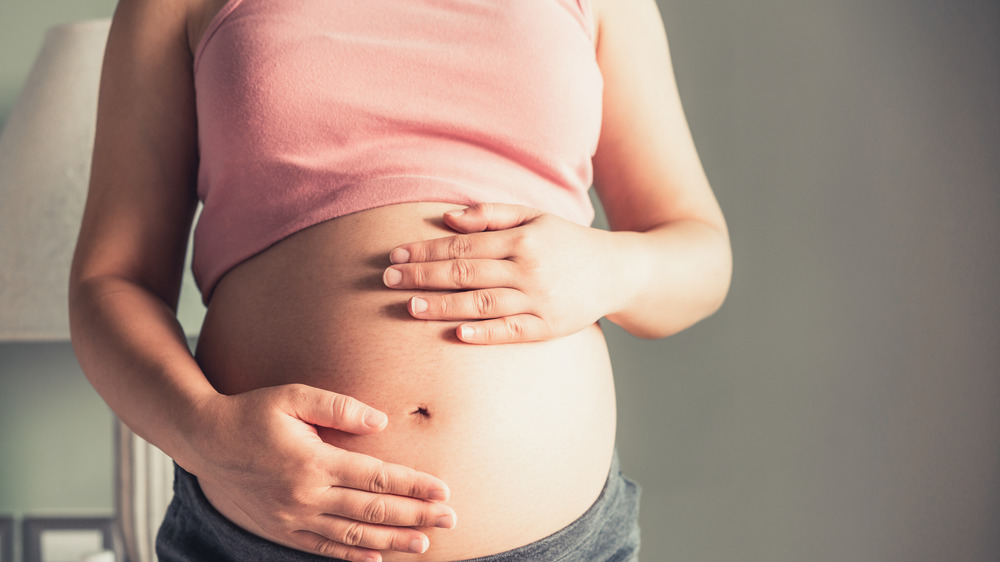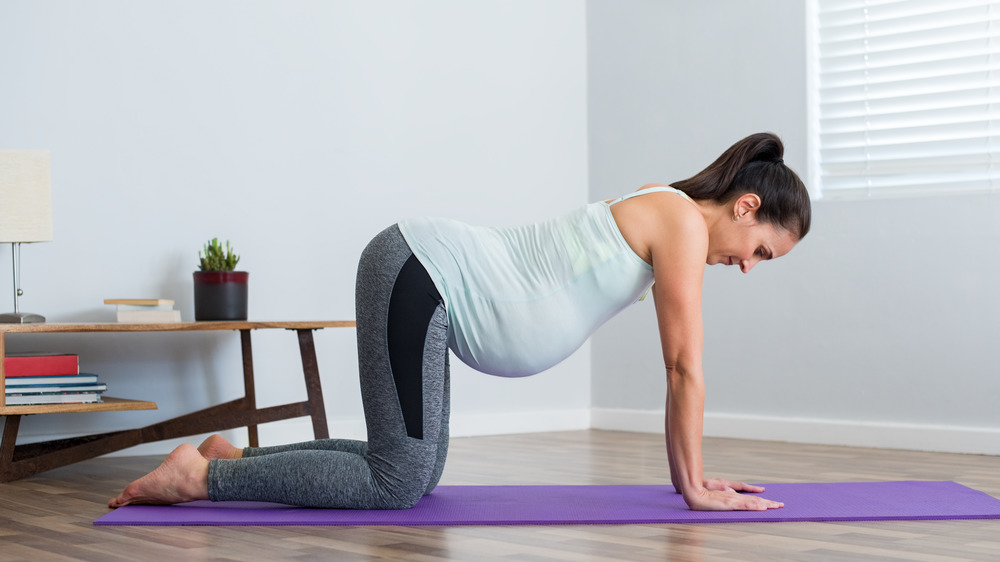Can You Still Do Planks During Pregnancy?
If you're a pro at doing planks to keep your core strengthened, you may wonder if you can continue to do them once you become pregnant. After all, they're very effective at tightening the ab muscles. And if there's one thing you don't want to neglect when you're pregnant, it's the abs, which undergo a huge stretch as the uterus expands.
Planks can be safe to do during pregnancy, but there are some instances when they should be modified.
If you've been planking regularly before pregnancy, it's generally safe to continue to do so throughout the first trimester, as long as your doctor has cleared you for exercise. Your baby bump has not made an appearance yet, so getting in plank position and holding it should be no different than before your pregnancy. Planking can keep your core strong, which may reduce your risk for back pain and potentially make your labor quicker, according to What To Expect.
Planking in the second trimester
At the end of the first trimester, you may notice something unusual happening to your belly. You may see a ridge running from below the breastbone to the middle of the belly or a bulge in the ab muscles during abdominal exercise (per Shape) or even when you're moving from lying down to sitting up (per Mayo Clinic). This is an indication of diastasis recti, an abnormal separation between the left and right sides of your abdominal muscles.
Diastasis recti is quite common in pregnancy. A study published in the British Journal of Sports Medicine found that 33 percent of pregnant women developed diastasis recti at 21 weeks. Diastasis recti is not always obvious, so it's recommended that starting at 12 weeks and periodically after, you or your health-care provider check your abs for a gap wider than three finger-widths apart.
If you have diastasis recti — which is more common in women having multiples or with a higher BMI — you'll need to modify how you do planks. "As your baby grows, your abdominal wall begins to get thinned and stretched out with the weight pressing down on it," Andrea Speir, a pre- and postnatal fitness specialist, told Livestrong. The typical plank position can put weight directly onto the thin, stretched-out muscles.
To avoid that, hold the plank for several shorter sets of five to ten seconds or try an inclined plank: Place your hands or forearms on an elevated surface, such as a bench. Diastasis recti usually heals on its own after birth.
What about planks in the third trimester?
Planks — especially if they are modified — are generally safe throughout pregnancy, while ab exercises performed lying down should be avoided. "Your growing uterus can compress the vena cava, the major vessel that returns blood to your heart, potentially reducing blood flow and making you feel dizzy or nauseated," Alyssa Dweck, M.D., an ob-gyn in Westchester County, New York, told Shape.
Planks are recommended instead of crunches and double leg lifts for keeping your core strengthened throughout pregnancy. Static ab exercises such as the plank are perfect for pregnant women, as they put less pressure on the spine than dynamic exercises like crunches.
However, it's important to pay attention to your body. As your pregnancy progresses, the baby's increasing weight can hurt your back during planks, especially if you don't have proper form or good core strength. Plus the downward weight of your belly can pull at the lower back. If you start to feel pain or strain in your back, try the plank from your knees to help avoid gravitational pull causing pressure on the lower back.
Working the abs throughout the third trimester is safe with proper modifications and an all-clear from your doctor. Strong abdominal muscles support your internal organs as your baby grows, encourage proper posture (lessening lower back pain), and help you recover more quickly after birth. If you have any concerns or questions about the best ab exercises for you, talk to your healthcare provider or a trainer who's knowledgeable about prenatal fitness.



